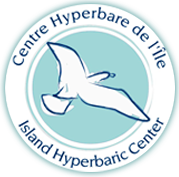Post Concussive Syndrome and HBOT
Post Concussive Syndrome and HBOT
Hyperbaric oxygen therapy (HBOT) has emerged as a promising intervention for (PCS), a complex disorder with symptoms that can persist for weeks, months, or even years after a . PCS symptoms often include , dizziness, cognitive difficulties, and emotional and . The therapeutic premise of HBOT for PCS is based on its ability to enhance the oxygen supply to the brain, promoting healing and potentially inducing neuroplasticity. This can lead to the repair of chronically impaired brain functions and an improvement in the quality of life for individuals with (mTBI). Recent studies have reported significant neurological improvements in PCS patients undergoing HBOT. These improvements are attributed to HBOT’s capacity to induce neuroplasticity, leading to the repair of brain functions that were chronically impaired following a concussion. Clinical trials have demonstrated that HBOT can result in statistically significant improvements in and even in symptoms related to () when applied in a controlled therapeutic regimen. This suggests that HBOT, by delivering high concentrations of oxygen under increased atmospheric pressure, can foster an environment conducive to brain healing and recovery. Moreover, the effectiveness of HBOT in treating PCS has been affirmed in both adult and pediatric populations, indicating its potential as a versatile treatment modality. Despite these promising findings, the evidence base is still evolving, and further research is needed to fully understand the optimal conditions and protocols for HBOT in the context of PCS. Nonetheless, the current data indicates a significant potential for HBOT to improve cognitive and behavioral functions, alleviate PCS symptoms, and enhance the overall quality of life for those affected by post-concussive syndrome. oxygen therapy (HBOT) has emerged as a promising intervention for (PCS), a complex disorder with symptoms that can persist for weeks, months, or even years after a . PCS symptoms often include , dizziness, cognitive difficulties, and emotional and . The therapeutic premise of HBOT for PCS is based on its ability to enhance the oxygen supply to the brain, promoting healing and potentially inducing neuroplasticity. This can lead to the repair of chronically impaired brain functions and an improvement in the quality of life for individuals with (mTBI). Recent studies have reported significant neurological improvements in PCS patients undergoing HBOT. These improvements are attributed to HBOT’s capacity to induce neuroplasticity, leading to the repair of brain functions that were chronically impaired following a concussion. Clinical trials have demonstrated that HBOT can result in statistically significant improvements in and even in symptoms related to () when applied in a controlled therapeutic regimen. This suggests that HBOT, by delivering high concentrations of oxygen under increased atmospheric pressure, can foster an environment conducive to brain healing and recovery. Moreover, the effectiveness of HBOT in treating PCS has been affirmed in both adult and pediatric populations, indicating its potential as a versatile treatment modality. Current data indicates a significant potential for HBOT to improve cognitive and behavioral functions, alleviate PCS symptoms, and enhance the overall quality of life for those affected by post-concussive syndrome.
